The use and influence of science
About this module
This resource combines rich historical sources with oral histories of four Australian scientists, revealing their discoveries, inspirations and personal challenges. It invites students to think critically about the people behind scientific breakthroughs—their responsibilities, evolving goals and the human story that shapes science.
Copyright for teachers
You can download all collection materials in this resource for education purposes. For more information, go to copyright for teachers.
Topics in this module
This module has one topic.
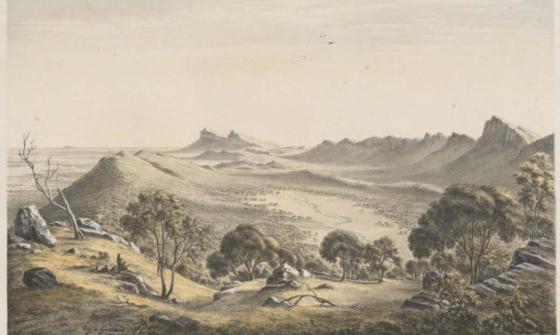
Eugene Von Guerard, Source of the Wannon, 1867, nla.gov.au/nla.obj-135740687
Oral histories
This module has 4 oral history recordings from prominent Australian scientists from different times, backgrounds and specialty areas.
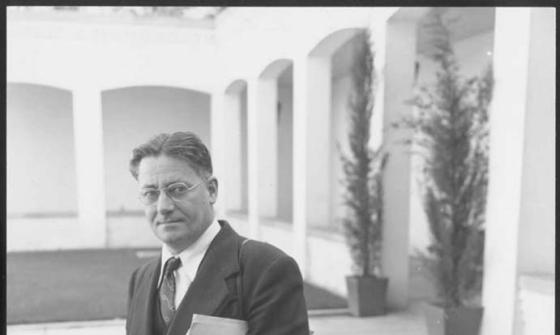
Australian News and Information Bureau. [Portrait of Howard Florey] [picture] / [Australian News and Information Bureau]. nla.gov.au/nla.obj-136743351
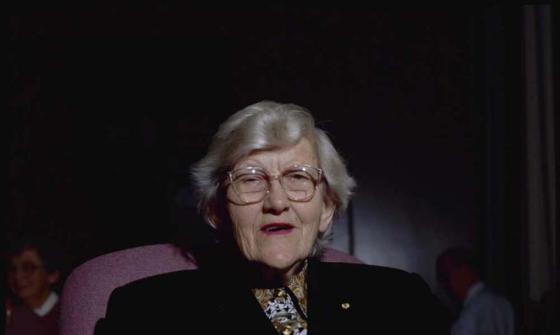
Damian McDonald, Portrait of Nancy Millis, 1999, nla.gov.au/nla.obj-144499251
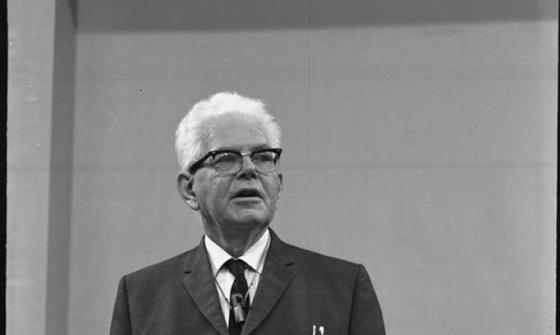
John Aloysius Mulligan, Sir Mark Oliphant lecturing at the University of Sydney, 1 September 1970, 1970, nla.gov.au/nla.obj-145323842
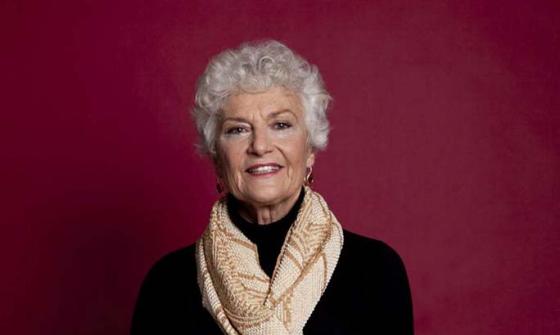
Philip Gostelow, Professor Fiona Stanley at the Telethon Institute for Child Health Research, Subiaco, Perth, 21 August 2013, 2013, nla.gov.au/nla.obj-153312966
Introductory activities
These activities help students:
- Activate prior knowledge
- Think critically about scientific breakthroughs
- Understand key concepts and terms
- Place Australian science in a global context
Students will explore what drives discovery, how society influences science, and the responsibilities tied to innovation. They’ll also hear directly from Australian scientists via primary source recordings.
Activity 1: Tower Challenge
This activity encourages lateral thinking, creativity, and teamwork, using limited resources to solve an old problem in new ways.
- Divide students into small groups.
- Provide each group with a deck of cards, rubber bands, small paper clips and pencils
- Challenge them to build the tallest card tower that can support the greatest weight
- Optional Challenges: Tallest tower, Strongest tower, Tower using the fewest cards.
Refelect to the task buy asking students:
- What makes a good invention?
- How do you build on existing ideas?
- What limits scientific progress?
Activity 2: Class Discussion (Background Concepts)
This activity builds comprehension and language skills, and highlights that all different understandings of the same concept.
Ask students to define these key terms:
- science
- endeavour
- breakthrough
- enlightened thinking
- lateral thinking.
Discuss
- What are some of the greatest innovations in human history? How do you define ‘great’?
- “Humans have an innate desire to improve and control their surroundings”—do you agree?
- What do you think is meant by enlightened thinking?
Concluding activity
Our Oral History and Folklore Collection contains over 45,000 hours of interviews with key Australian figures including scientists, politicians, historians.
Activity 3: A lived experience
This activity builds confidence, public speaking skills, and highlights that all personal experiences are part of our shared history.
In pairs, get students to create short audio recordings of personal stories (for example: a discovery, holiday, or memory).
- Write 4–5 open-ended questions
- Discuss closed vs open questions (for example, “Tell me more about…” / “How did you…?”)
- Record audio only (not video), including:
- Names, date, location
- A short content disclaimer
- Limit to 5 minutes per student
- Save recordings (email, class folder, etc.)
As a class, discuss:
- Was it stressful to recall details?
- How did it feel to be recorded?
- Do you think it captured you accurately?
- How might we record history in the future?
Glossary
This glossary includes words highlighted throughout the module. Unless otherwise indicated, definitions and glossary entries come from the Maquarie Dictionary.
Definitions have been selected for best fit to context; some entries have multiple meanings in different applications.
Aerodynamic
- of or relating to aerodynamics
- able to travel through the air; designed for air travel
- of or relating to a shape that reduces drag, as of an aeroplane or sports car: an aerodynamic spoiler
Archaeological
(From Archaeology) the systematic study of any culture, especially a prehistoric one, by excavation and description of its remains
Bow drill
See Bow Drill with Annotations, Wikimedia Commons
Cochlear implant
an artificial hearing device which produces hearing sounds by stimulating inner-ear nerves by means of a pad of electrodes implanted into the cochlea; designed to restore some hearing ability to those with severe damage to the inner-ear nerves
CSIRO
Commonwealth Scientific and Industrial Research Organisation, the largest scientific research organisation in Australia. Although active in a wide field of scientific research, its main responsibility has been to support Australian primary and secondary industry, rather than engage in pure research.
Cyclical
of or relating to a cycle or cycles; revolving or recurring in cycles; characterised by recurrence in cycles
Collate
to compare (texts, statements, etc.) in order to note points of agreement or disagreement
Correlation
mutual relation of two or more things, parts, etc.
Deficiencies
(from deficiency)
- the state or fact of being deficient; lack; incompleteness; insufficiency
- the amount lacked; a deficit
Ether
a highly volatile and flammable colourless liquid, diethyl ether, (C2H5)2O, obtained by the action of sulphuric acid on alcohol, and used as a solvent and anaesthetic
Game
wild animals, including birds and fishes, hunted for sport or profit
Germinate
to sprout; put forth shoots
Ingenuity
the quality of being ingenious; inventive talent.
Innate
- inborn; existing or as if existing in one from birth: innate modesty
- inherent in the essential character of something
Innovative
new and original
Kinetic Energy
the energy which a body possesses by virtue of its motion; the energy which any system possesses by virtue of the motion of its components
Leverage
the mechanical advantage or power gained by using a lever
Maim
to deprive the use of some bodily part, mutilate; cripple
Mosaic
a pattern composed of diverse elements combined together
Mutton
the flesh of well gown sheep, as distinguished from lamb
Patented
acquired a government grant conferring exclusive rights to make, use and sell an invention or discovery
Polymer
a material made of long, repeating chains of molecules; often used to describe plastics (which are synthetic polymers)
Definition from Live Science: What Is a Polymer? https://www.livescience.com/60682-polymers.html
Prototype
the original or model on which anything is formed
Rotary
turning around on an axis; having a part or parts that rotate
Spoil
to become spoiled, bad, or unfit for use, as food or other perishable substances; become tainted or putrid
Suburbia
the suburbs collectively; the characteristic life of people in suburbs
Tuber
a fleshy, usually oblong or rounded thickening or outgrowth (as the potato) of a subterranean stem or shoot
Type Metal
an alloy for making printing types, consisting chiefly of lead and antimony, and sometimes small quantities of tin, copper, etc.
Virologist
a person who studies or deals with virology, the branch of medical science that deals with viruses and the diseases caused by them
Curriculum links
This resource is aligned to the Australian Curriculum: Science for Year 9 students.
Biological sciences
- Describe the form and function of reproductive cells and organs in animals and plants, and analyse how the processes of sexual and asexual reproduction enable survival of the species (AC9S9U02)
Chemical sciences
- Explain how the model of the atom changed following the discovery of electrons, protons and neutrons and describe how natural radioactive decay results in stable atoms (AC9S9U06)
- Model the rearrangement of atoms in chemical reactions using a range of representations, including word and simple balanced chemical equations, and use these to demonstrate the law of conservation of mass (AC9S9U07)
Nature and development of science
- Explain how scientific knowledge is validated and refined, including the role of publication and peer review (AC9S9H01)
- Investigate how advances in technologies enable advances in science, and how science has contributed to developments in technologies and engineering (AC9S9H02)
Use and influence of science
Questioning and predicting
- Develop investigable questions, reasoned predictions and hypotheses to test relationships and develop explanatory models (AC9S9I01)
Planning and conducting
- Plan and conduct valid, reproducible investigations to answer questions and test hypotheses, including identifying and controlling for possible sources of error and, as appropriate, developing and following risk assessments, considering ethical issues, and addressing key considerations regarding heritage sites and artefacts on Country/Place (AC9S9I02)
- Select and use equipment to generate and record data with precision to obtain useful sample sizes and replicable data, using digital tools as appropriate (AC9S9I03)
Processing and analysing data and information
- Select and construct appropriate representations, including tables, graphs, descriptive statistics, models and mathematical relationships, to organise and process data and information (AC9S9I04)
- Analyse and connect a variety of data and information to identify and explain patterns, trends, relationships and anomalies (AC9S9I05)
Evaluating
- Evaluate conclusions, including identifying sources of uncertainty and possible alternative explanations, and describe specific ways to improve the quality of the data (AC9S9I06)
- Construct arguments based on analysis of a variety of evidence to support conclusions or evaluate claims, and consider any ethical issues and cultural protocols associated with accessing, using or citing secondary data or information (AC9S9I07)
Communicating
- Write and create texts to communicate ideas, findings and arguments effectively for identified purposes and audiences, including selection of appropriate content, language and text features, using digital tools as appropriate (AC9S9I08)



